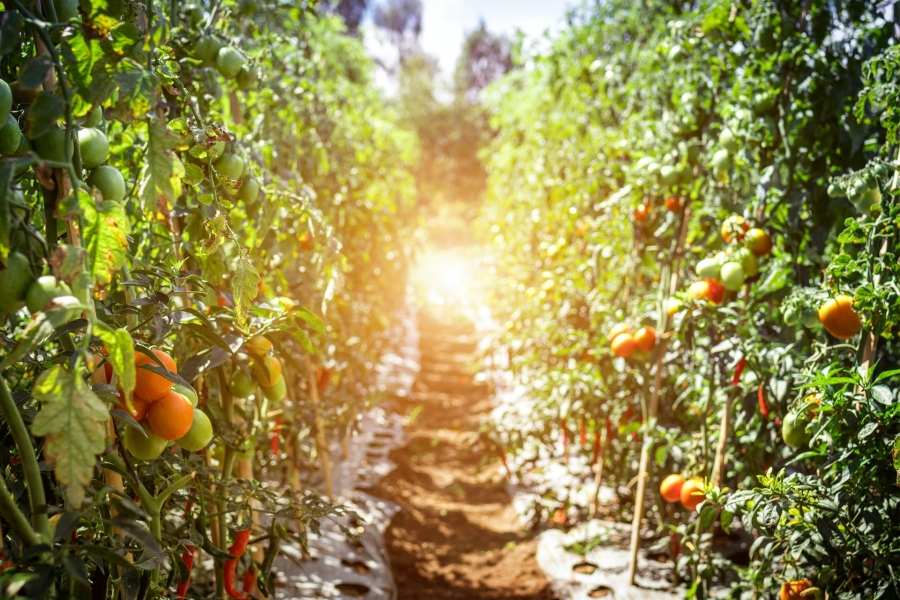<p style="text-align: justify;">The popularity of organic fruits and vegetables is prompting many health conscious individuals to understand the process behind organic agriculture. But, if you are interested in growing your own, it is important to first figure out what organic plants are.</p>
<p style="text-align: justify;"><strong>Plant-based foods:</strong> The plants are not sprayed with toxic pesticides and herbicides (synthetic chemicals), it is only allowed to use products of natural origin (such as tobacco leaves, chilli and garlic) to fight pests and weeds. The most important thing is that the seeds are not genetically modified organisms. <a href="http://www.albafruit.fr/">Organic agriculture</a> takes care of the nutrients of the earth and operates contrary to monocultures, sowing several crops at the same time (for example, indigenous people used to plant corn, squash and beans since pre-Hispanic times) generating a mini living ecosystem, attracting beneficial insects for each type of cultivation Organic foods must be certified (have the seal of approval) by an official body. Each country has its organizations and its regulations. The certifiers visit the producers and ensure that they follow the practices established by the organic law of each region.</p>
<p style="text-align: justify;">Let’s check out the process of growing organic tomatoes. Several elements must be taken into account to grow tomatoes successfully. For this, you have to ask the right questions like: how to make fertilizers for tomatoes and many more. Also, to help you with your project, here are 10 tips to put into practice.</p>
<h2 style="text-align: justify;"><strong>Choice of Soil</strong></h2>
<p style="text-align: justify;">The first decisive element is the type of soil suitable for tomatoes. Organic tomatoes are more comfortable in a slightly sandy soil, very rich in minerals. This allows them to deploy their root system better.</p>
<h2 style="text-align: justify;"><strong>The choice of neighboring Plant</strong></h2>
<p style="text-align: justify;">Tomatoes should not be grown alongside the following vegetables: beets, cabbage, potatoes and corn. On the other hand, tomatoes can very well be in the neighborhood of leeks, peppers, onions, peppers, parsley, garlic and celery.</p>
<h2 style="text-align: justify;"><strong>Fertilizer and Plant Space</strong></h2>
<p style="text-align: justify;">Tomatoes are heavy feeders and need a lot of nutrients in order to grow through the season.</p>
<p style="text-align: justify;">The nutrient that should be used will depend on the current nutritional content of the soil. If you germinate plants from seeds and transplant, the space between each plant should be a minimum of 60 cm and a maximum of 90 cm.</p>
<h2 style="text-align: justify;"><strong>Leaf Care</strong></h2>
<p style="text-align: justify;">Once in the ground, the lower leaves must be pruned. It is a good practice to direct growth upwards and reduce the risk of diseases. Half of the lower leaves should be removed with pruning shears when the plants are 60 cm or more.</p>
<h2 style="text-align: justify;"><strong>Yellowing Leaves</strong></h2>
<p style="text-align: justify;">To avoid yellowing of the leaves, Epsom salt is a very practical solution. Epsom salt helps strengthen the stems and improve growth.</p>
<h2 style="text-align: justify;"><strong>Use of Tomato Stakes</strong></h2>
<p style="text-align: justify;">Skating is done to keep plants and fruit off the ground.This reduces stem stress and provides protection against strong winds.</p>
<h2 style="text-align: justify;"><strong>Suppression of Gourmands</strong></h2>
<p style="text-align: justify;">A gourmand is a stem growing between the central stem and the main stem. The presence of gourmands reduces or does not allow fruit production, hence the need to remove them from developing. It is not essential, but it produces better, healthier, sweeter fruit.</p>
<h2 style="text-align: justify;"><strong>Insect Control</strong></h2>
<p style="text-align: justify;">Insects such as slugs and snails are harmful to tomatoes, which is why it is essential to use repellents. Copper is ideal, you also need to have pipes around the garden.</p>
<h2 style="text-align: justify;"><strong>The Harvest</strong></h2>
<p style="text-align: justify;">The harvest is usually done 70 to 80 days after planting, taking about 20 to 30 days to reach maturity.</p>
<p style="text-align: justify;">Conventionally grown tomatoes are in the list of top ten fruits and vegetables that contain high quantities of pesticide residues. For people looking to start their own kitchen gardens, growing tomatoes organically should be a really good start to make.</p>

Growing Organic Tomatoes – 10 Steps For A Good Harvest
